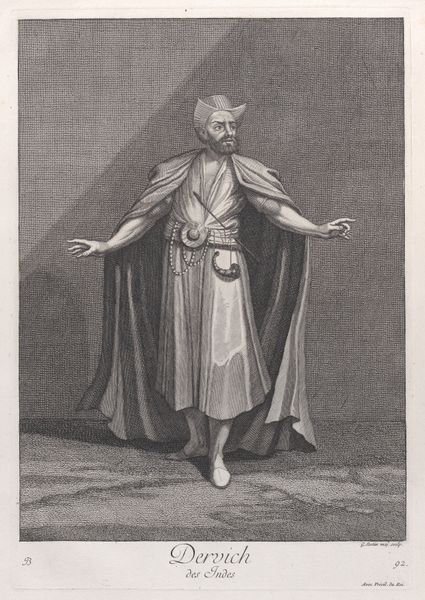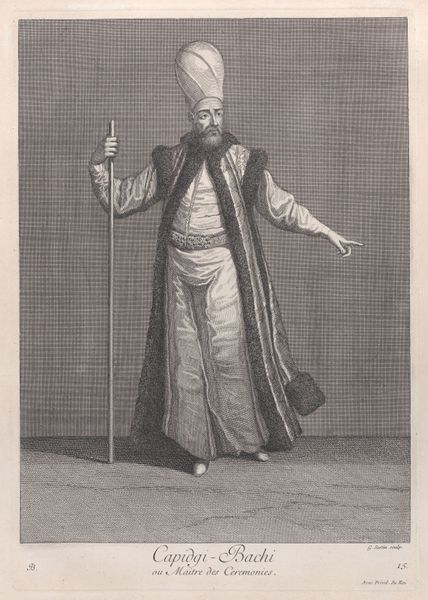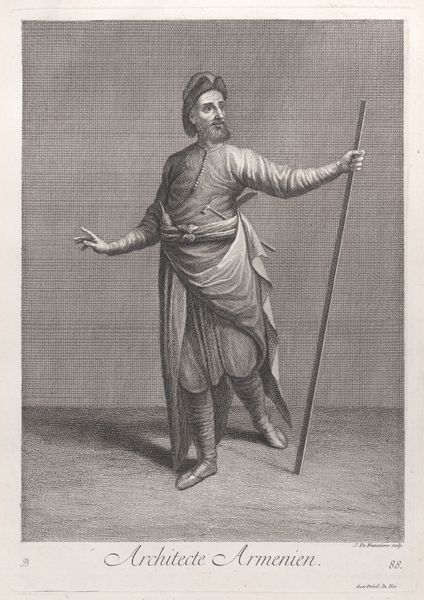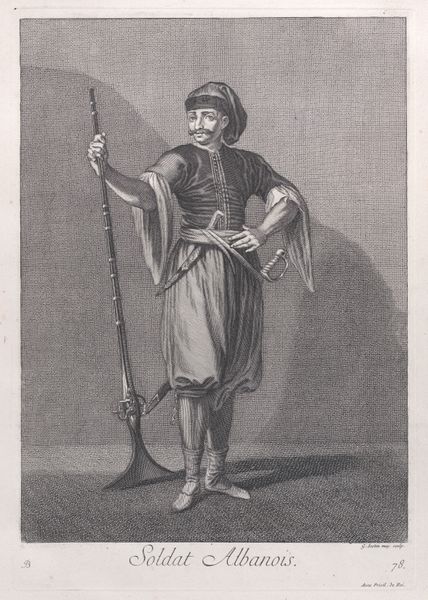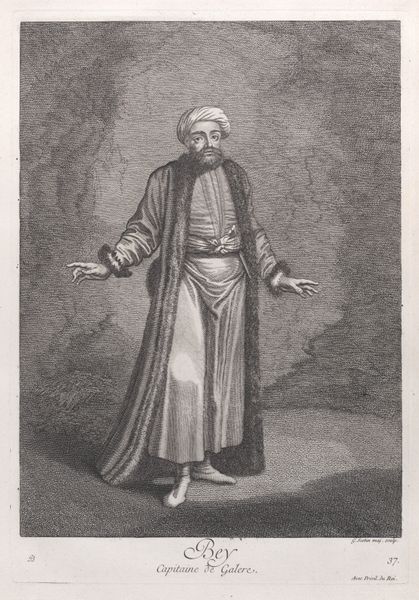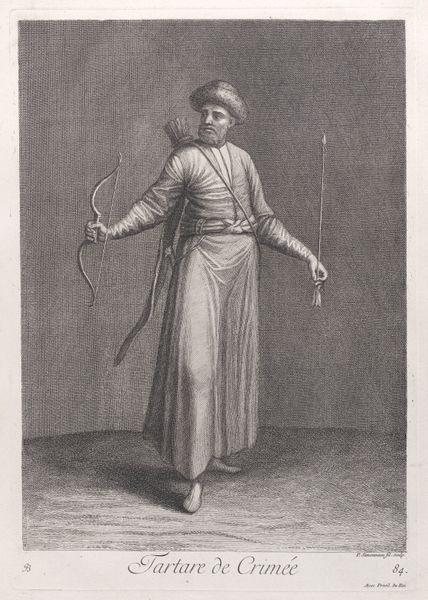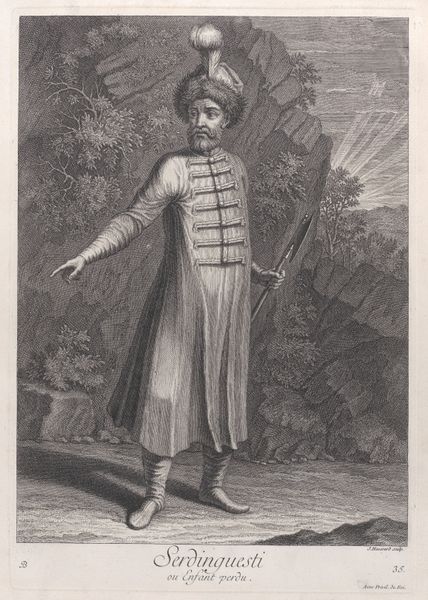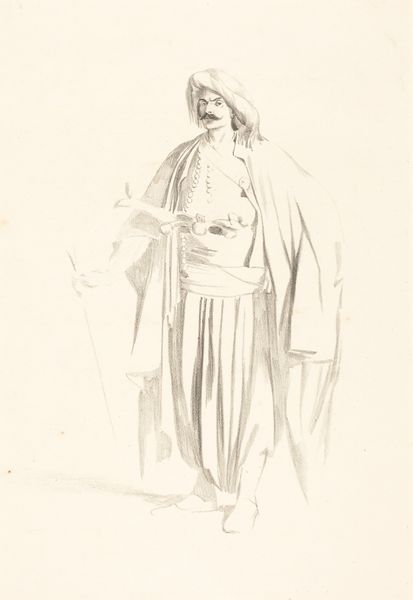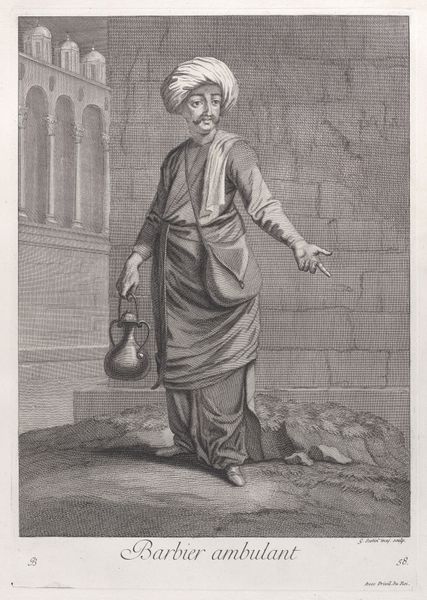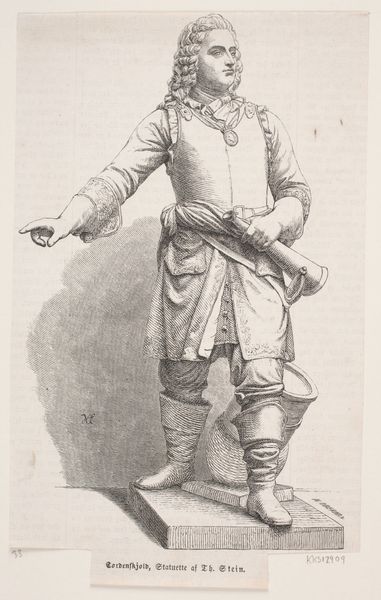
Bulgare, plate 82 from "Recueil de cent estampes représentent differentes nations du Levant" 1714 - 1715
0:00
0:00
drawing, print, engraving
#
portrait
#
drawing
#
baroque
# print
#
asian-art
#
figuration
#
men
#
line
#
genre-painting
#
engraving
Dimensions: Sheet: 16 1/2 × 11 15/16 in. (41.9 × 30.3 cm) Plate: 14 3/16 × 9 7/8 in. (36.1 × 25.1 cm)
Copyright: Public Domain
Curator: Jean Baptiste Vanmour created this engraving entitled "Bulgare, plate 82 from 'Recueil de cent estampes representent differentes nations du Levant'" between 1714 and 1715. Editor: There’s a certain melancholy in his posture, isn't there? Despite the almost theatrical drapery, he looks a little… lost, perhaps? Curator: It’s intriguing to consider this work as part of Vanmour's larger project, this "Recueil" which sought to document different nations of the Levant. Here we see this engagement with ethnographic representation, framing this Bulgarian man, positioning him within a very specific network of knowledge production and consumption. Editor: Absolutely. And within that framing, what stories are told, and importantly, what are obscured? The man is presented, categorized, perhaps even exoticized for a Western audience. We must consider the colonial gaze at play. What does it mean to 'collect' nations in this way? Who is this ‘Bulgare’ for whom is this image being produced? Curator: Exactly. We must consider the economic drivers. Vanmour’s engravings circulated as luxury goods. We have a tangible link between artistic creation, the mechanics of printmaking, and market exchange. The paper, the ink, the labor in crafting the plate… it all speaks to very material realities behind this image production. Editor: Indeed. Let's think about this further within a social context. Was Vanmour attempting an objective document, or was there a performative aspect in portraying cultural identity? What can his dress and his bearing tell us about the intersection of gender and ethnicity within Bulgarian society? Curator: Well, the detail of the etching allows us to consider carefully the texture and form of his clothing, and through this we can start to understand something about material craft within that society at that moment, the tools used, even the social organization of production that led to those garments being made. Editor: So, rather than just seeing him as a static representation, let's explore how Vanmour’s image can become a launchpad to discuss not just Balkan identity, but about the consumption and even appropriation of Eastern European identities at this moment in time. Curator: The creation and circulation of this piece can be regarded as part of complex, global flows of knowledge, capital, and representation. It really goes beyond a simple portrait, doesn’t it? Editor: Definitely; through looking at art in terms of its own materials, the stories of its creation become visible, but in terms of where that object then travelled, literally, we come face-to-face with both political acts of categorization and aesthetic encounters of discovery.
Comments
No comments
Be the first to comment and join the conversation on the ultimate creative platform.

